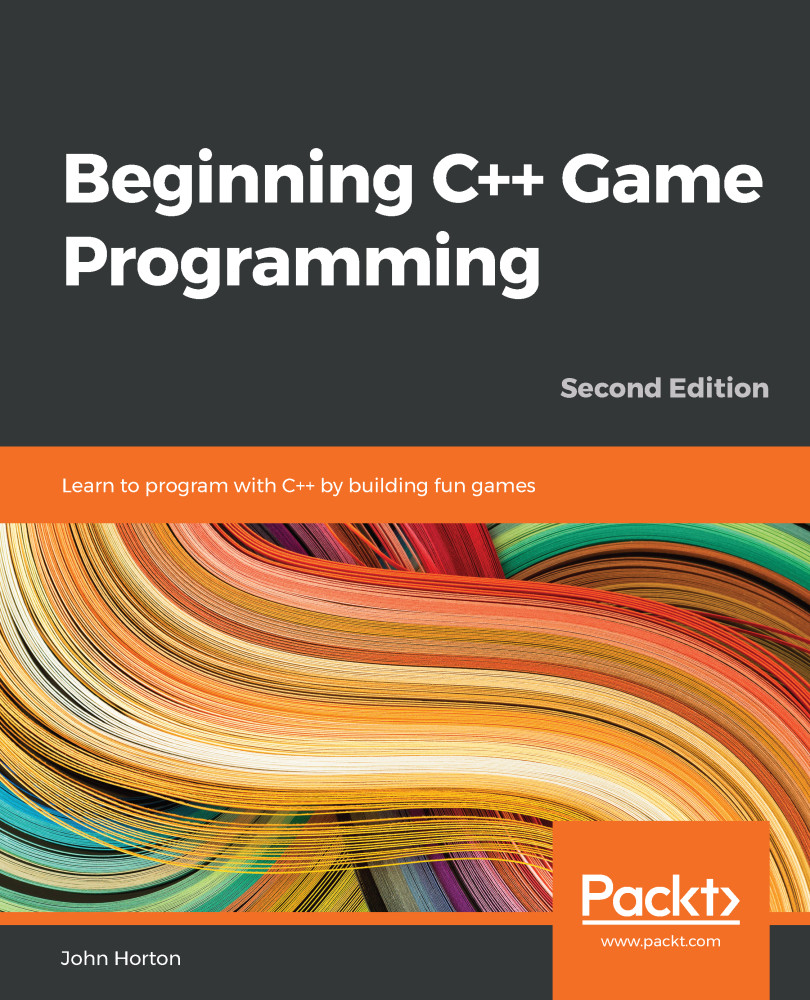Summary
In this chapter, we learned about Strings, SFML Text, and SFML Font. Between them, they allowed us to draw text to the screen, which provided the player with a HUD. We also used sstream, which allows us to concatenate Strings and other variables to display the score.
We also explored the SFML RectangleShape class, which does exactly what its name suggests. We used an object of the RectangleShape type and some carefully planned variables to draw a time-bar that visually displays to the player how much time they have left. Once we implement chopping and moving branches that can squash the player, the time-bar will provide visual feedback that will create tension and urgency.
In the next chapter, we are going to learn about a whole range of new C++ features, including loops, arrays, switching, enumerations, and functions. This will allow us to move tree branches, keep track of their locations, and squash the player.

































































